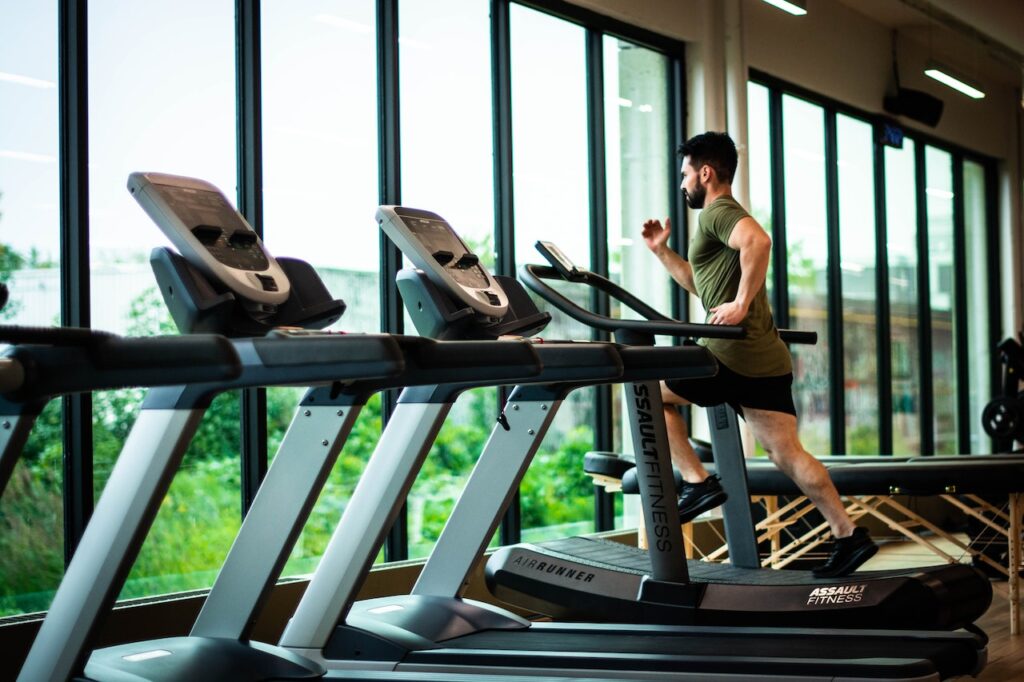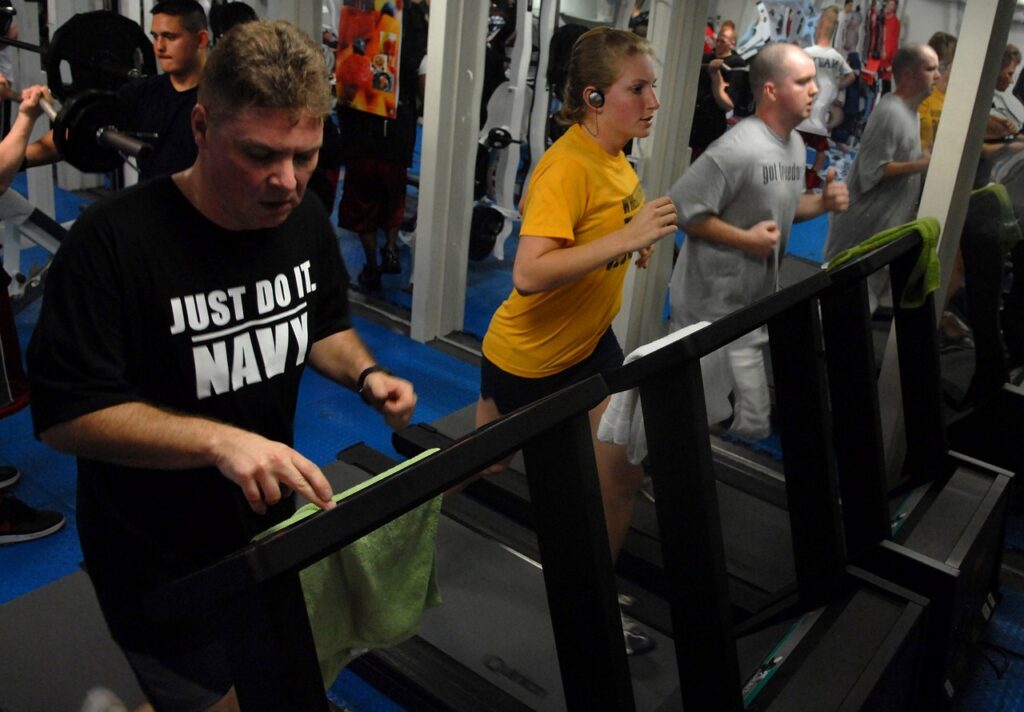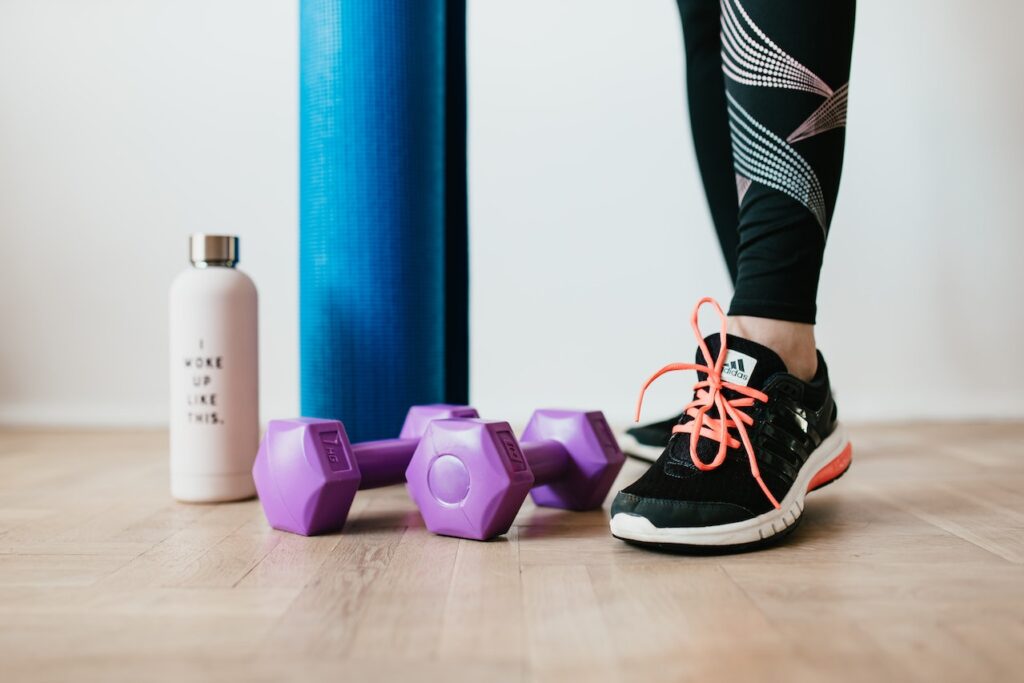Understanding the Treadmill
A quintessential piece of home gym equipment, the treadmill, is often the go-to machine for cardio workouts. Designed to simulate the most natural human movement – walking and running – treadmills are incredibly user-friendly.
The primary advantage of using a treadmill at home lies in its versatility. Whether you’re aiming for a leisurely walk, an uphill hike, or an intense run, a treadmill can accommodate a wide variety of workouts and intensity levels. Moreover, most treadmills come equipped with preset workout programs that can add variety and challenge to your exercise routine.
However, treadmills aren’t without their potential disadvantages. They can be high-impact, which may not suit individuals with joint issues. They also tend to occupy more space, which might be a consideration for smaller home gyms.
Free weights or resistance bands? Find out which is best for you.

Delving into the Elliptical
An elliptical, also known as a cross-trainer, offers a full-body workout that mimics the motion of running but with less impact, thus being gentler on the joints. This machine engages both your upper and lower body, providing a balanced workout.
The elliptical offers the advantage of low-impact exercise, making it a popular choice among those who have joint concerns or are looking for a break from high-impact workouts. It allows for a variety of workouts, from high-intensity intervals to steady-state cardio, by adjusting the resistance and incline.
On the flip side, because ellipticals offer less weight-bearing exercise compared to treadmills, they may not provide as much bone-strengthening benefit. Some users might also find the motion of an elliptical less natural than walking or running.
Ready to create your dream home gym? Get started with our comprehensive guide.
The Power of the Rowing Machine
Rowing machines offer an intense, full-body workout, engaging both your upper body and lower body. A rowing machine simulates the action of watercraft rowing, where resistance is provided by one’s body weight and the air or fluid inside the machine’s flywheel.
A rowing machine offers a tremendous cardiovascular workout while also building strength. It is a great calorie-burner and suitable for high-intensity interval training. Plus, rowing is a low-impact exercise, reducing the risk of joint strain.
However, rowing machines do come with their challenges. The technique can be tricky to master for beginners, and improper form can lead to back strain. Additionally, those with back issues should consult with a healthcare professional before incorporating rowing into their exercise routine.
Read our article to choose the right home gym equipment for your needs.

Cardiovascular Health: Treadmill vs Elliptical vs Rowing Machine
All three machines – treadmill, elliptical, and rowing machine – can contribute significantly to cardiovascular health when used correctly and consistently.
Treadmills, with their running and walking motions, offer a straightforward and efficient way to increase heart rate. However, to reap the maximum cardiovascular benefits, it’s important to incorporate a variety of workouts, including intervals and incline walking or running.
Ellipticals, while lower impact, can provide an equally intense cardiovascular workout, especially when using the arm handles to engage the upper body. The ability to increase resistance on an elliptical also allows for a highly challenging cardiovascular workout.
Rowing machines can provide an excellent cardio workout, with the added benefit of full-body engagement. They offer a combination of aerobic and anaerobic exercise, making rowing a high-intensity, heart-pumping activity.
While all three can boost cardiovascular health, the “best” machine ultimately depends on individual preference and goals. Treadmills may be the most straightforward for beginners, while ellipticals and rowing machines provide a full-body workout, which can lead to higher calorie burn.

Muscle Strengthening: A Comparative Analysis
While all three machines are great for cardiovascular workouts, their muscle strengthening benefits differ.
Treadmills primarily engage the lower body, specifically working the glutes, quads, hamstrings, and calves. However, by using the incline feature, you can significantly increase muscle activation.
On the other hand, ellipticals provide a more balanced full-body workout. They engage not only the legs but also the arms, chest, and back. By adjusting the resistance, you can also use an elliptical for strength training.
Rowing machines arguably provide the most comprehensive full-body workout. They work the legs, back, shoulders, arms, and core. With proper form, rowing can be an excellent strength-training workout.
Impact on Joints: Assessing the Safety of each Machine
In terms of joint safety, treadmills can be high-impact, which might not be suitable for those with joint issues. However, walking on a treadmill can be a low-impact alternative.
Ellipticals and rowing machines both offer low-impact workouts, putting less stress on the joints. These machines are an excellent option for those looking to reduce the risk of exercise-induced joint strain.
Limited space? Check out our clever space-saving ideas for your home gym.

Conclusion
The showdown between the treadmill, elliptical, and rowing machine highlights the unique benefits each brings to a home gym. All three machines offer cardiovascular benefits and varying degrees of muscle strengthening. However, they differ in impact level, muscle group engagement, and the naturalness of movement.
Ultimately, the choice of equipment should be based on your individual fitness goals, health concerns, and personal preferences. Remember, the most effective machine will be the one that you’re willing and able to use consistently. Happy exercising!
